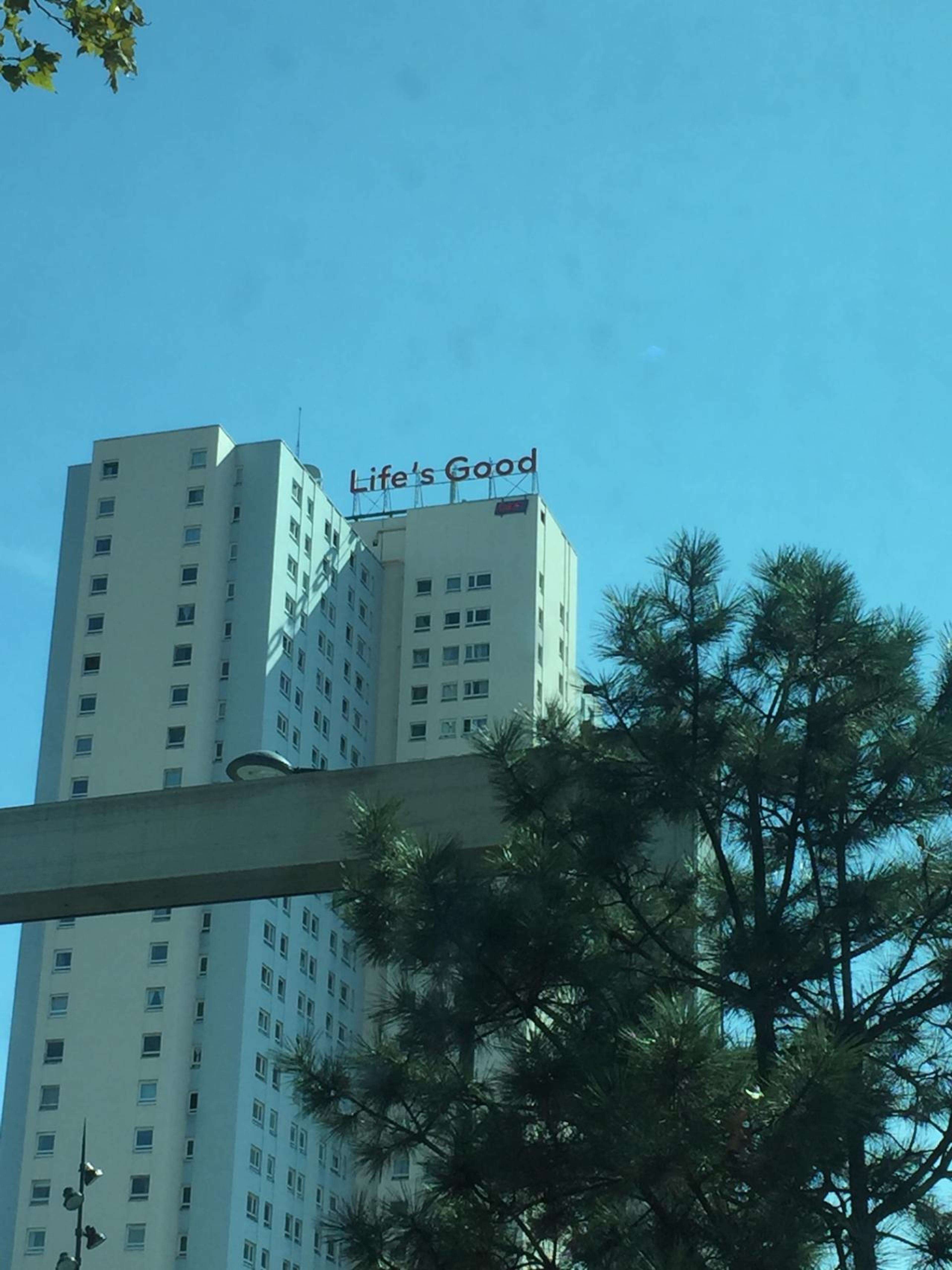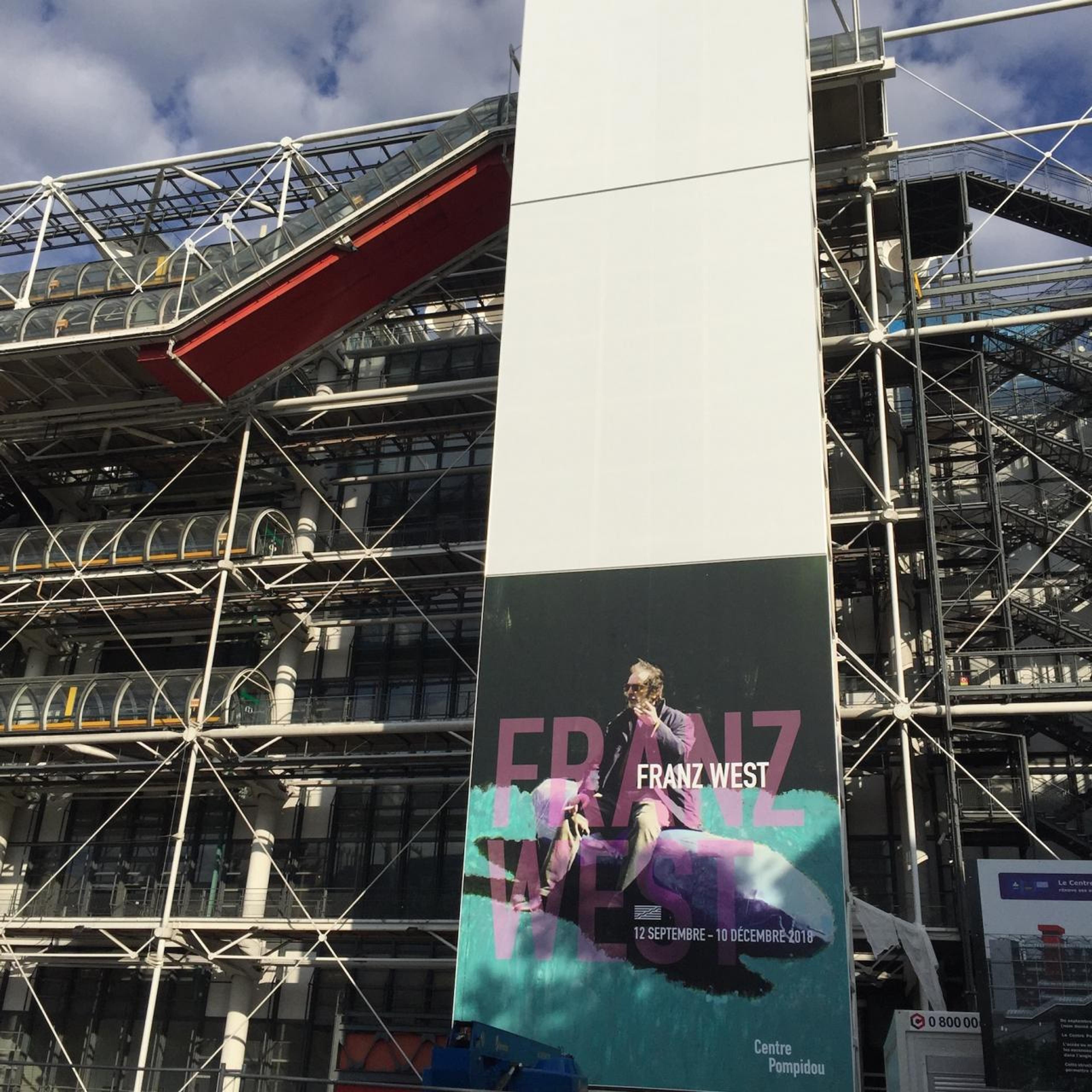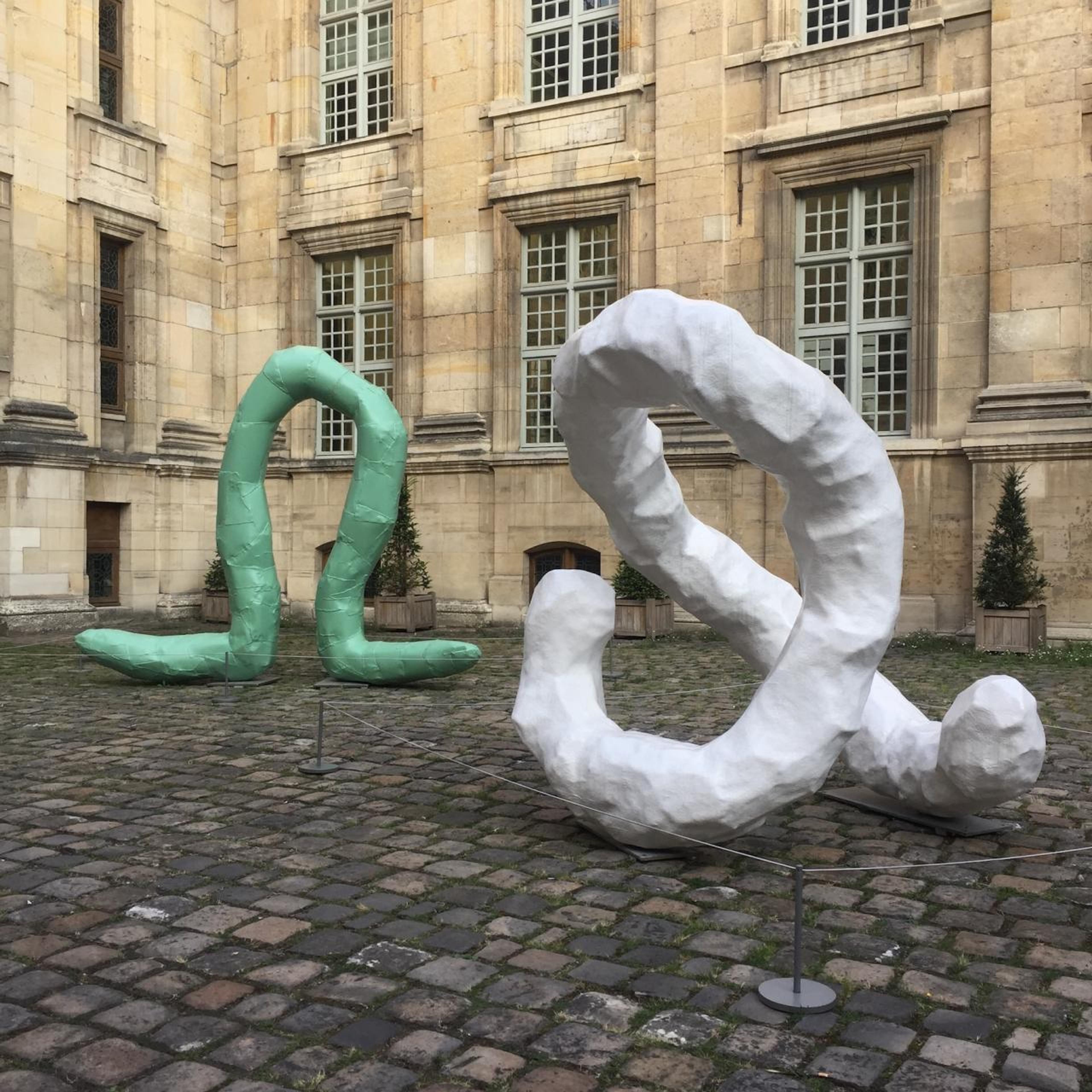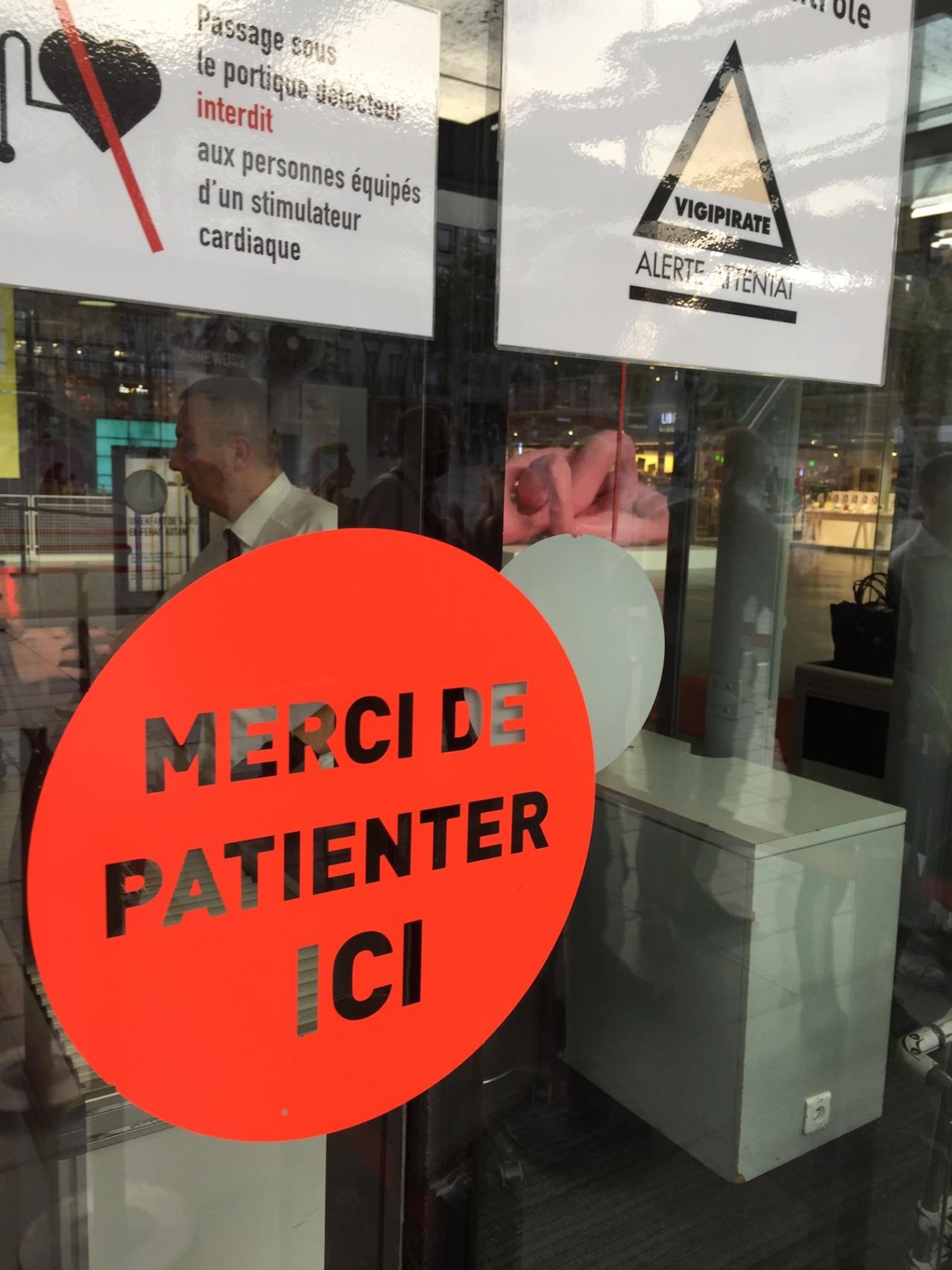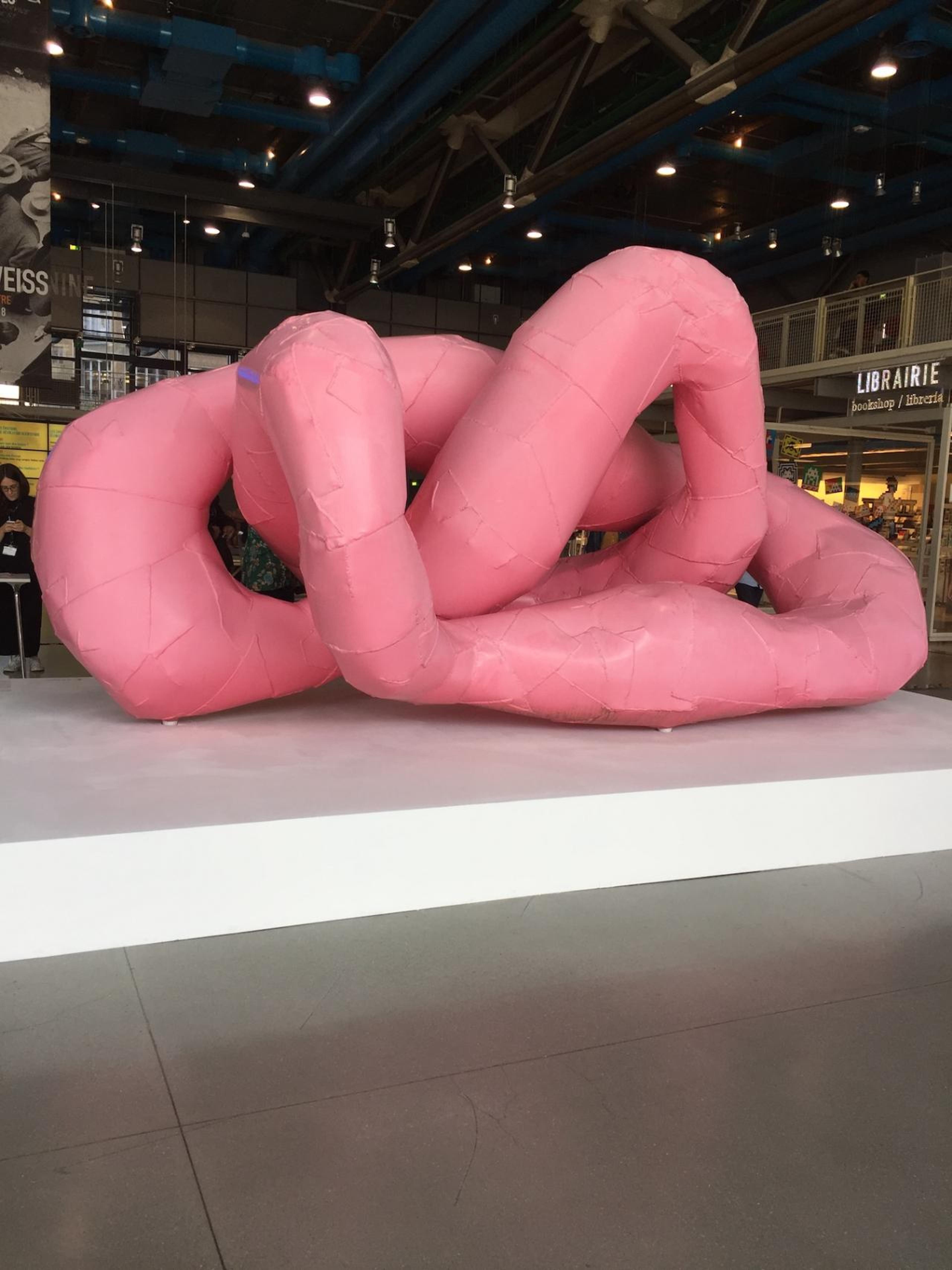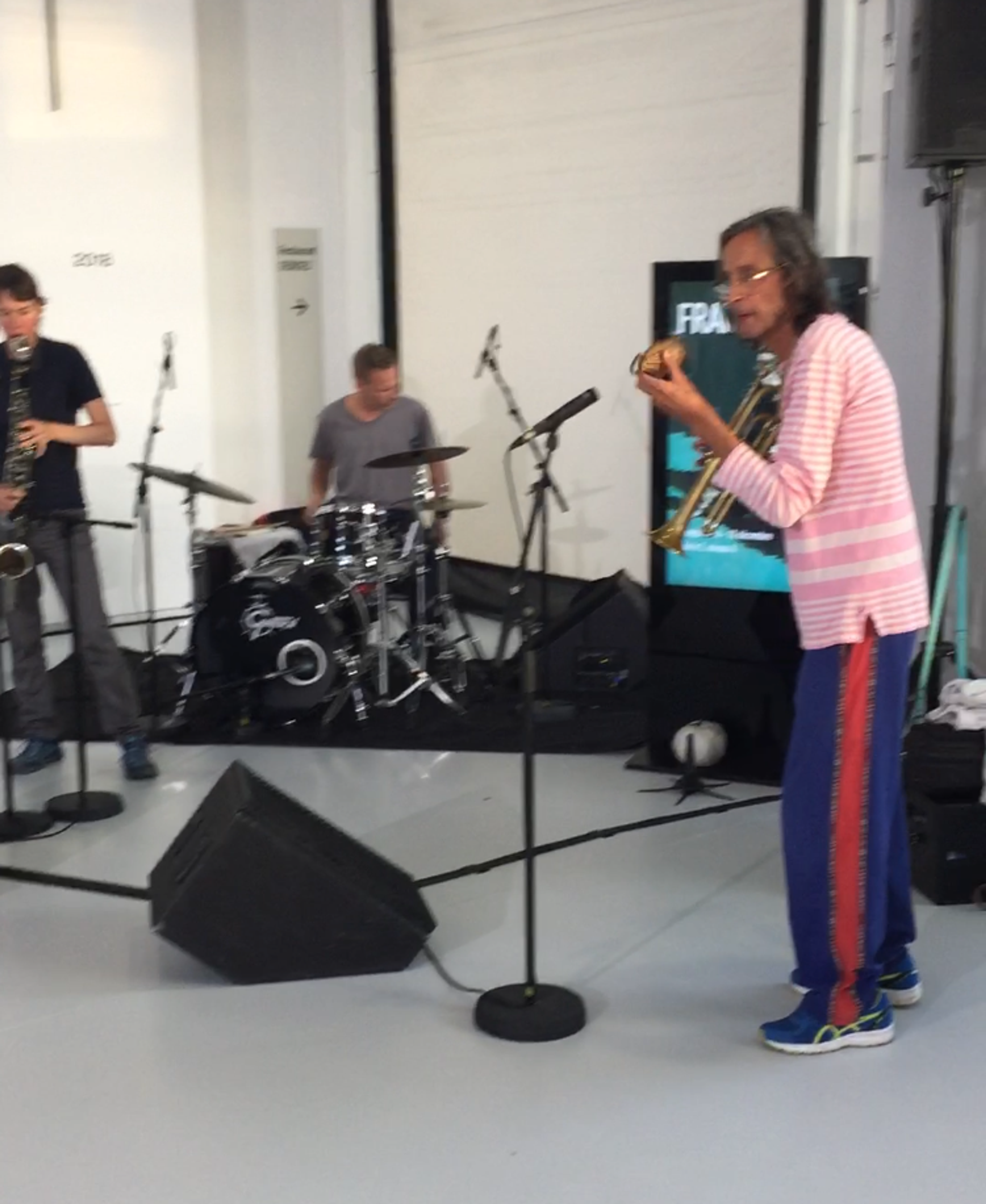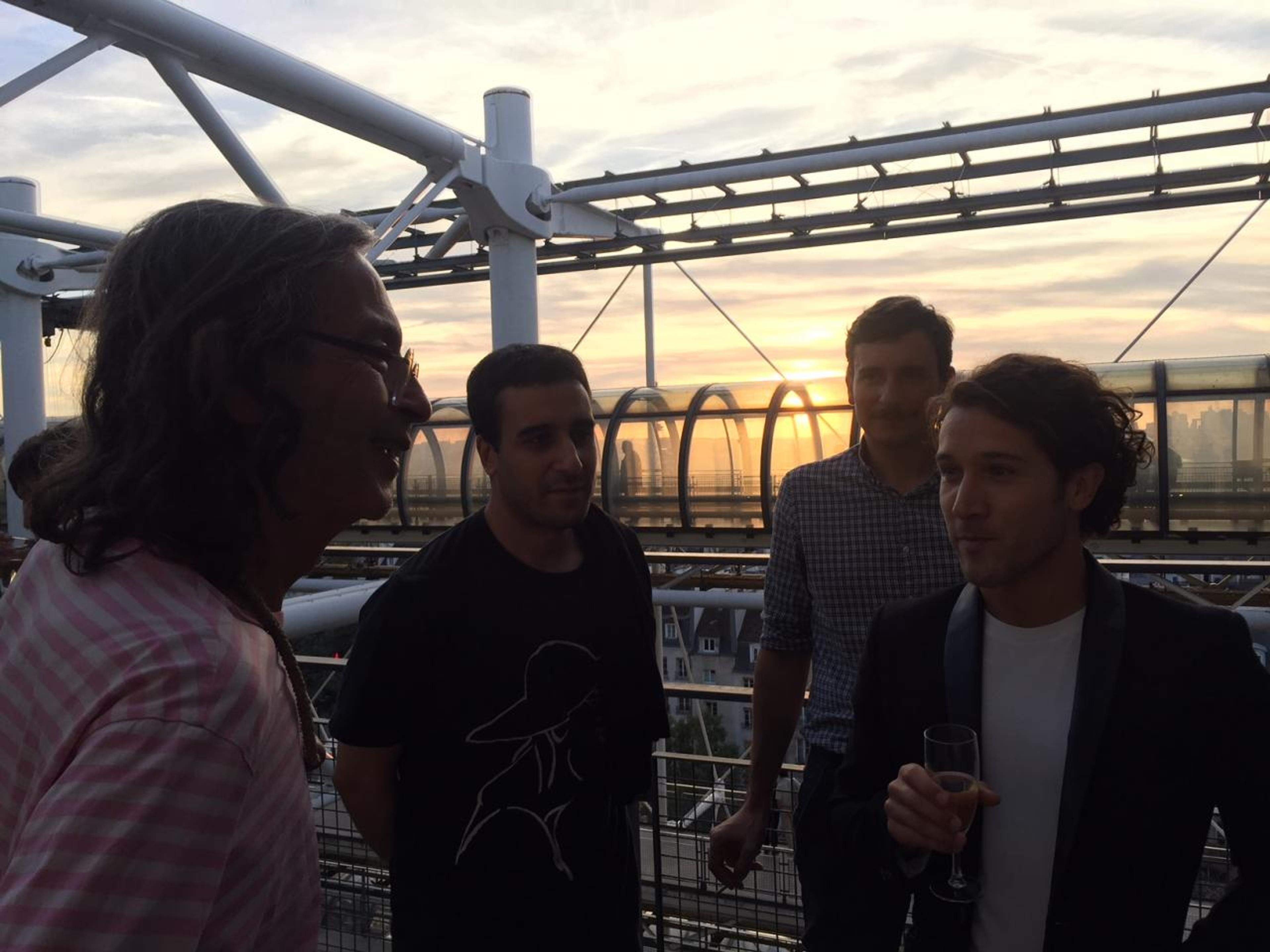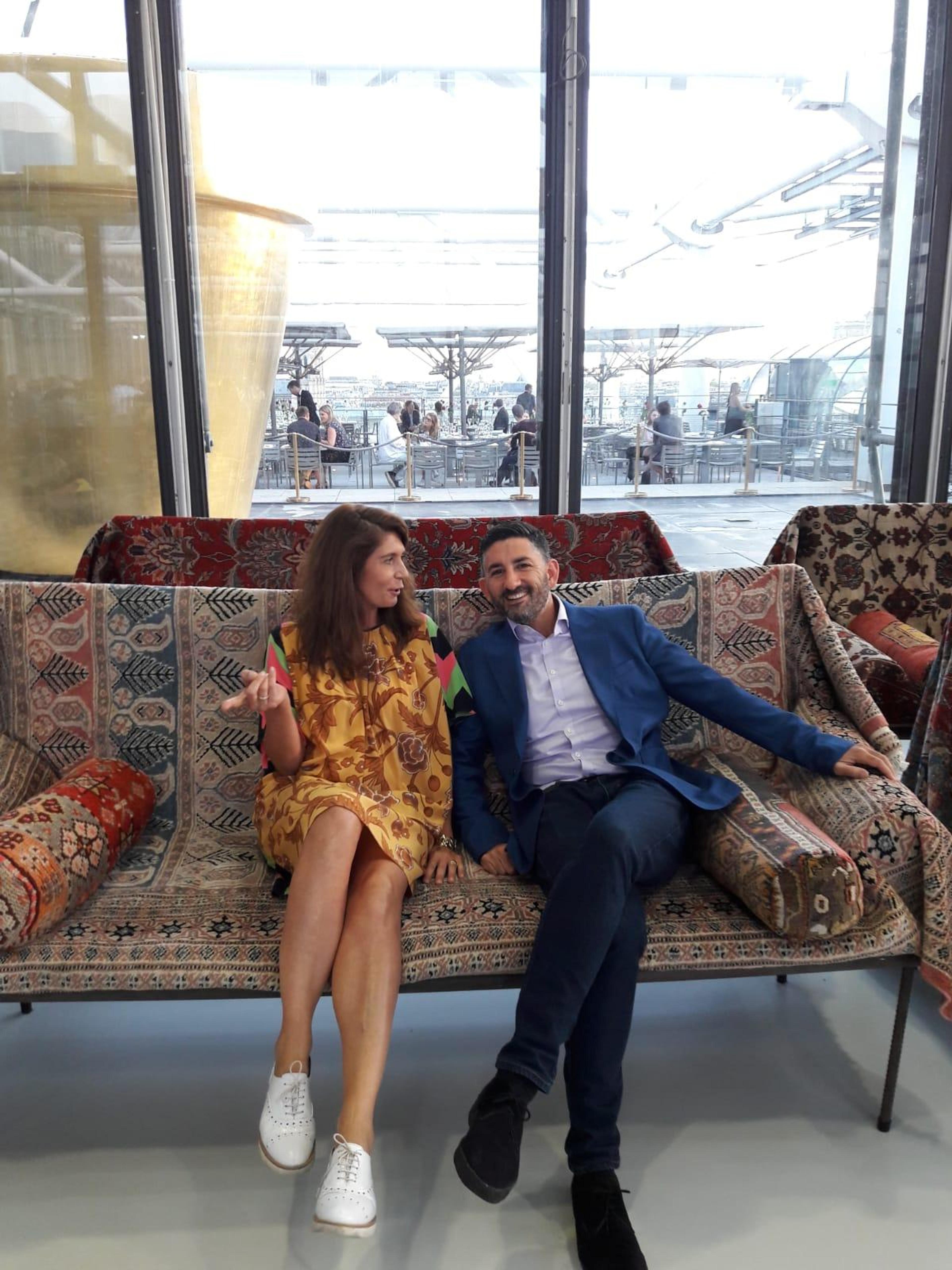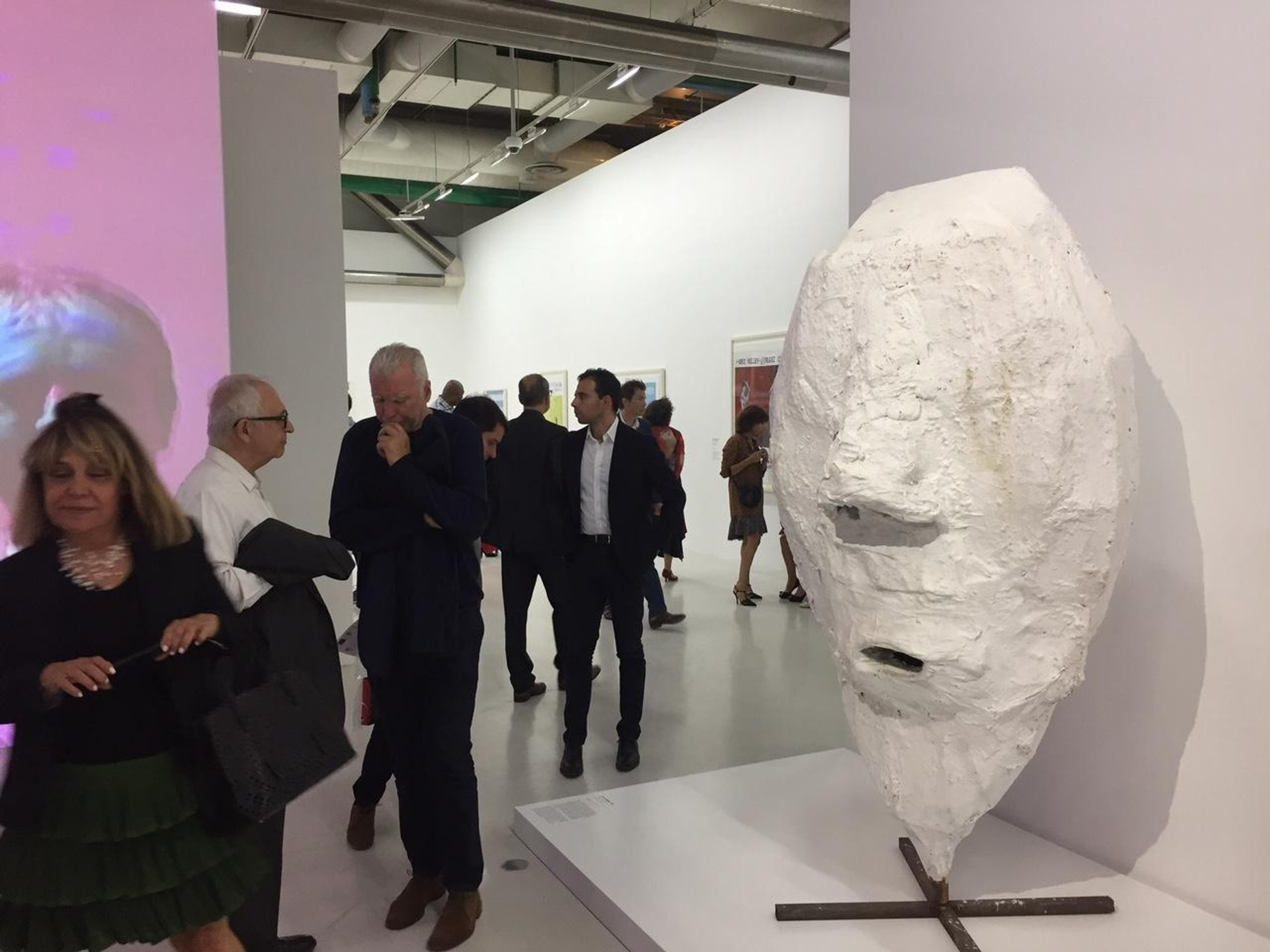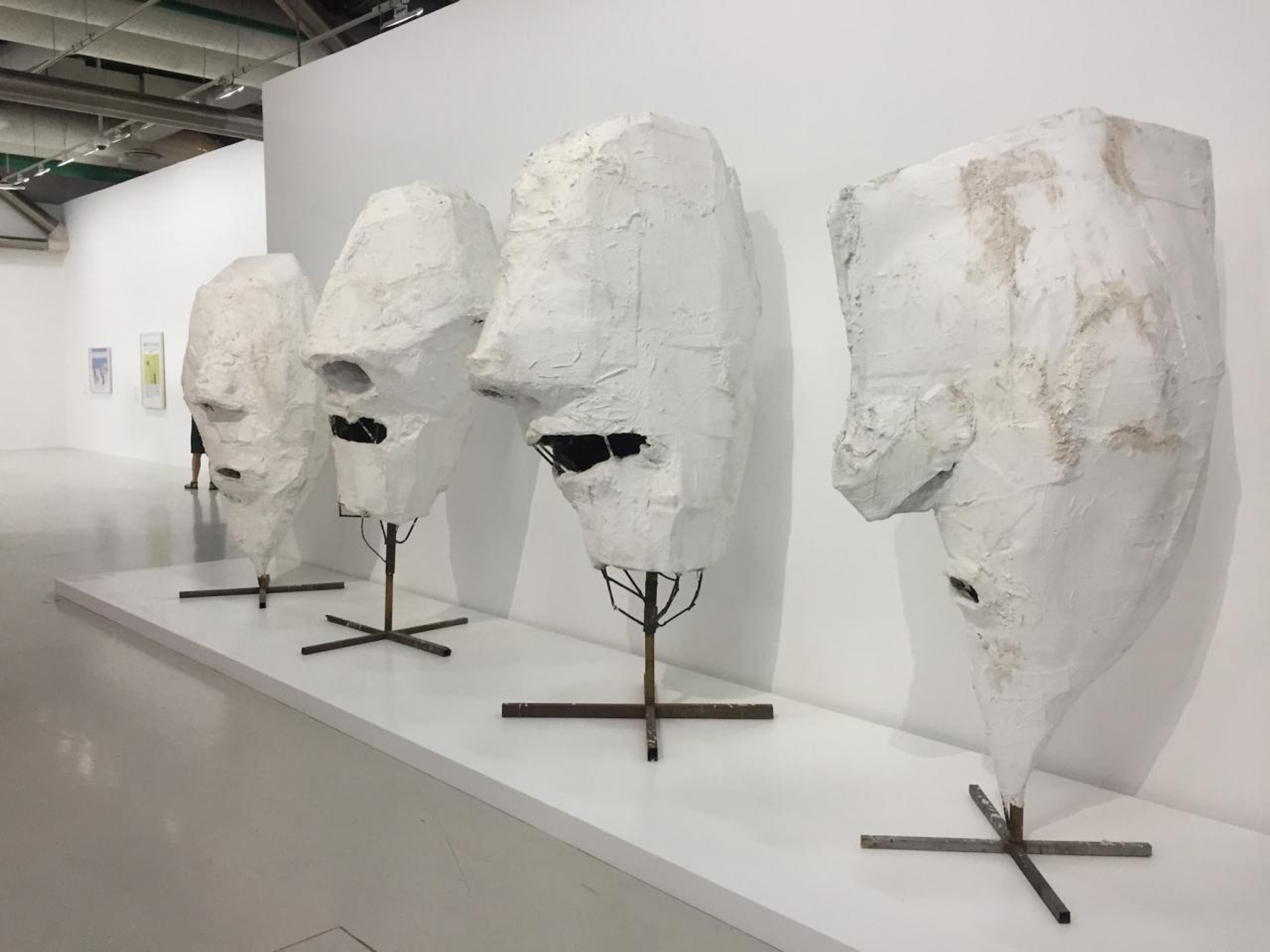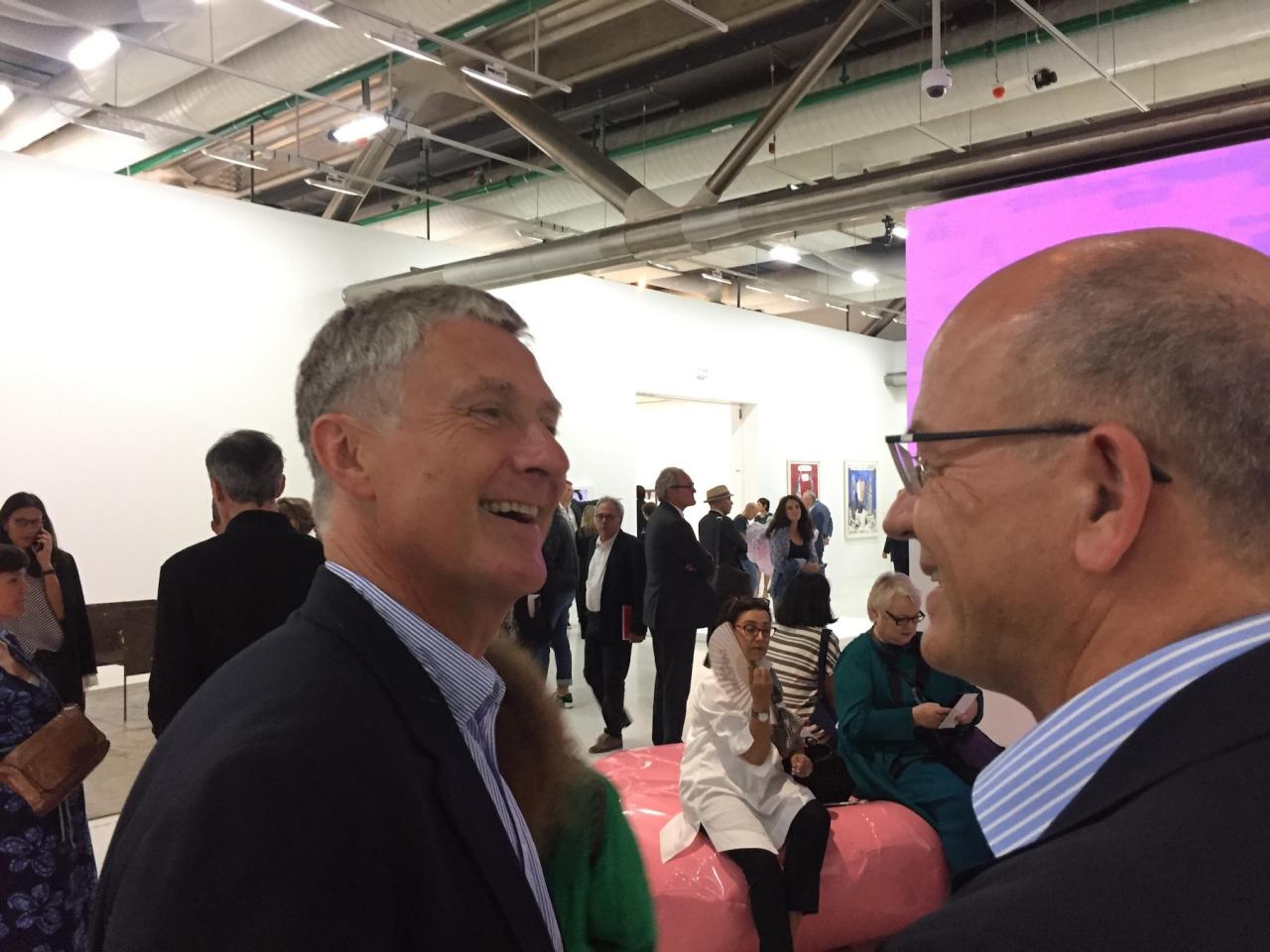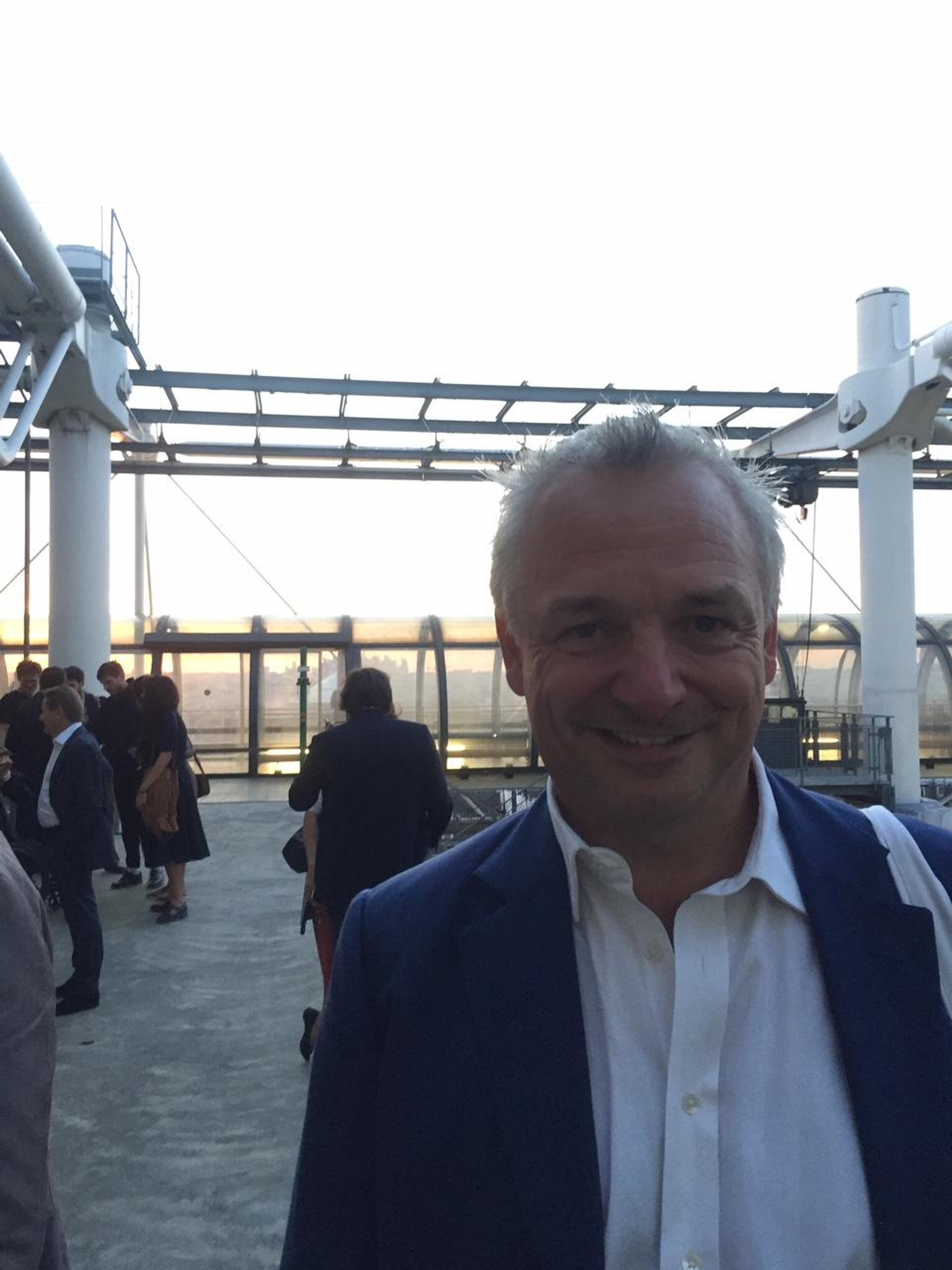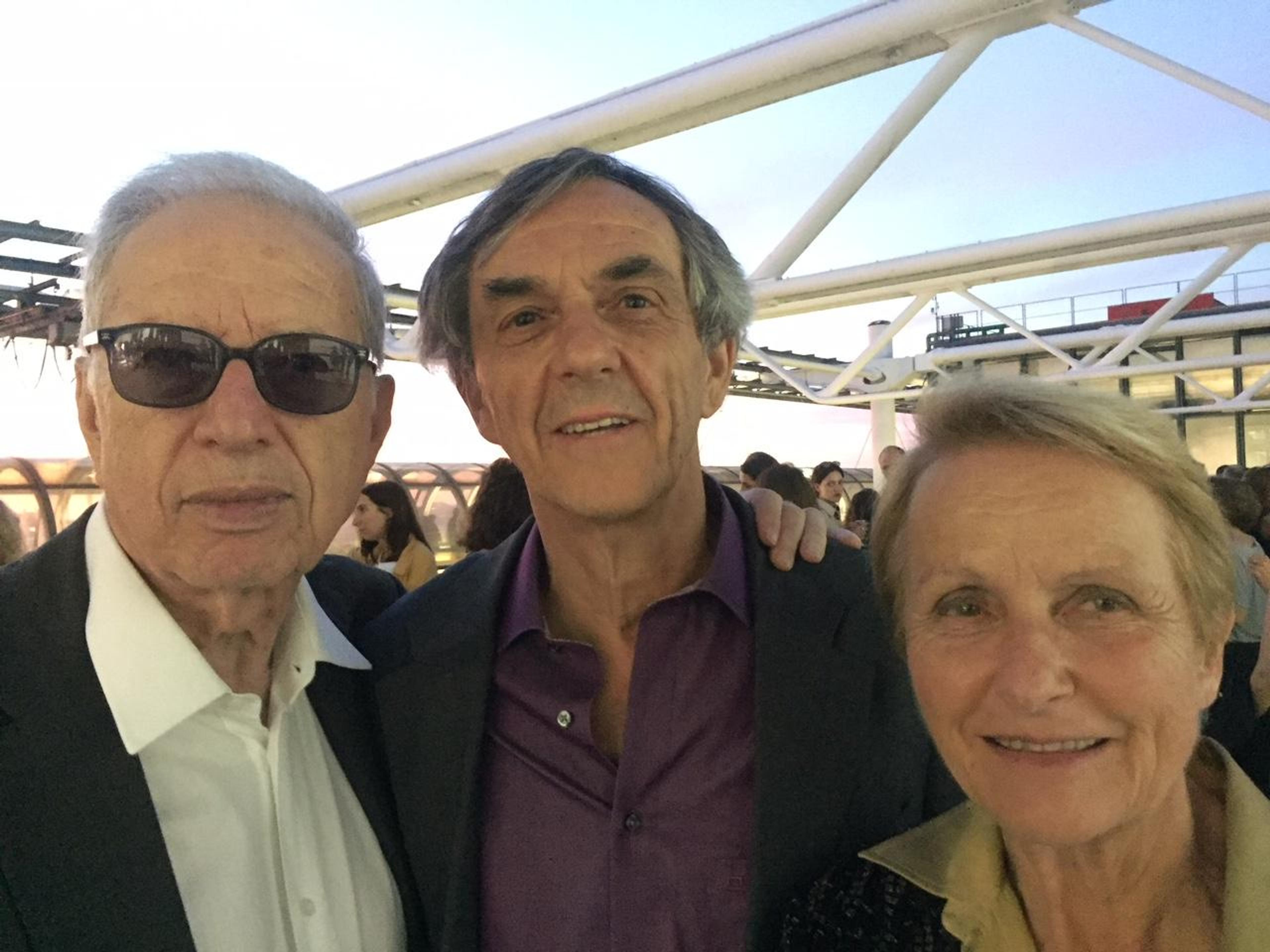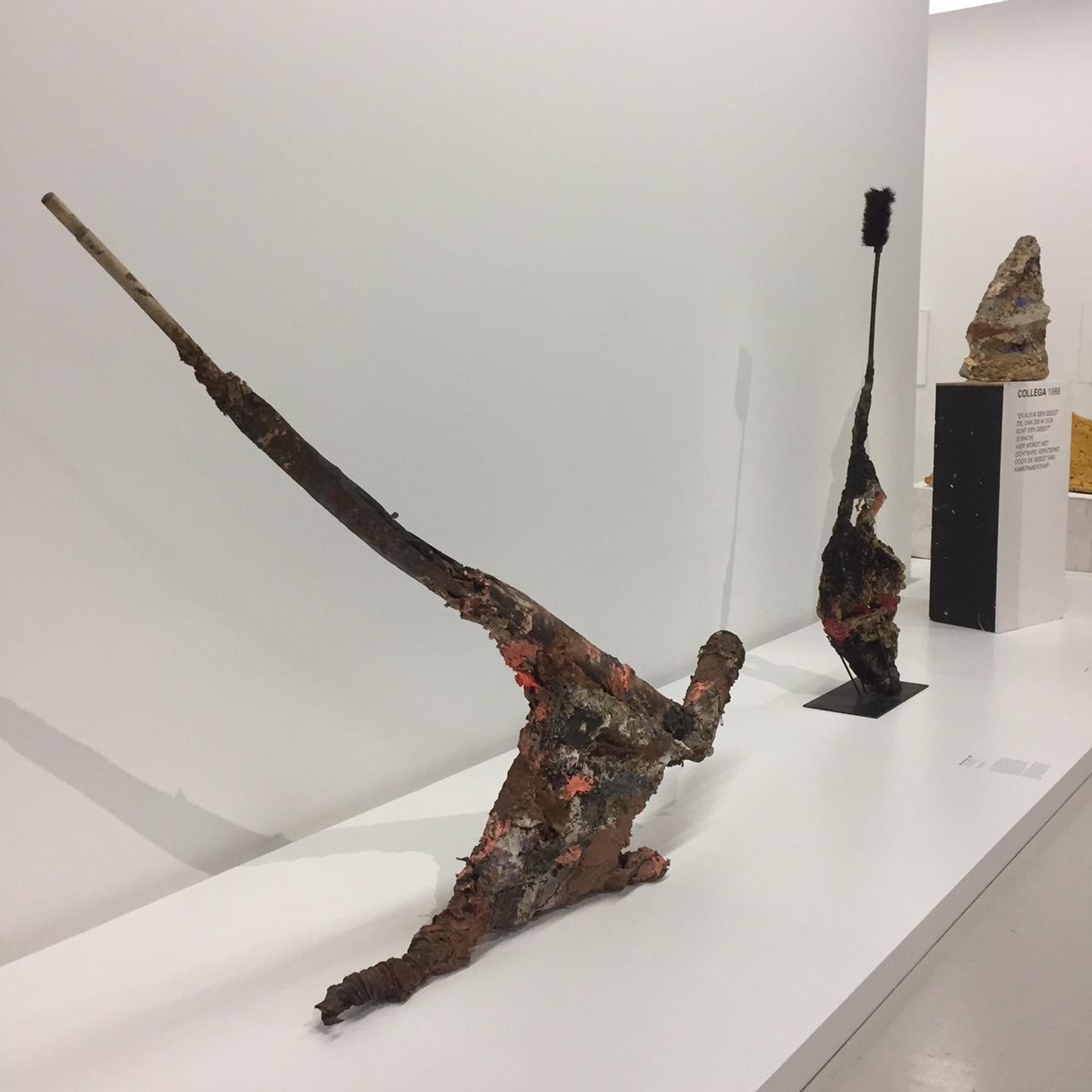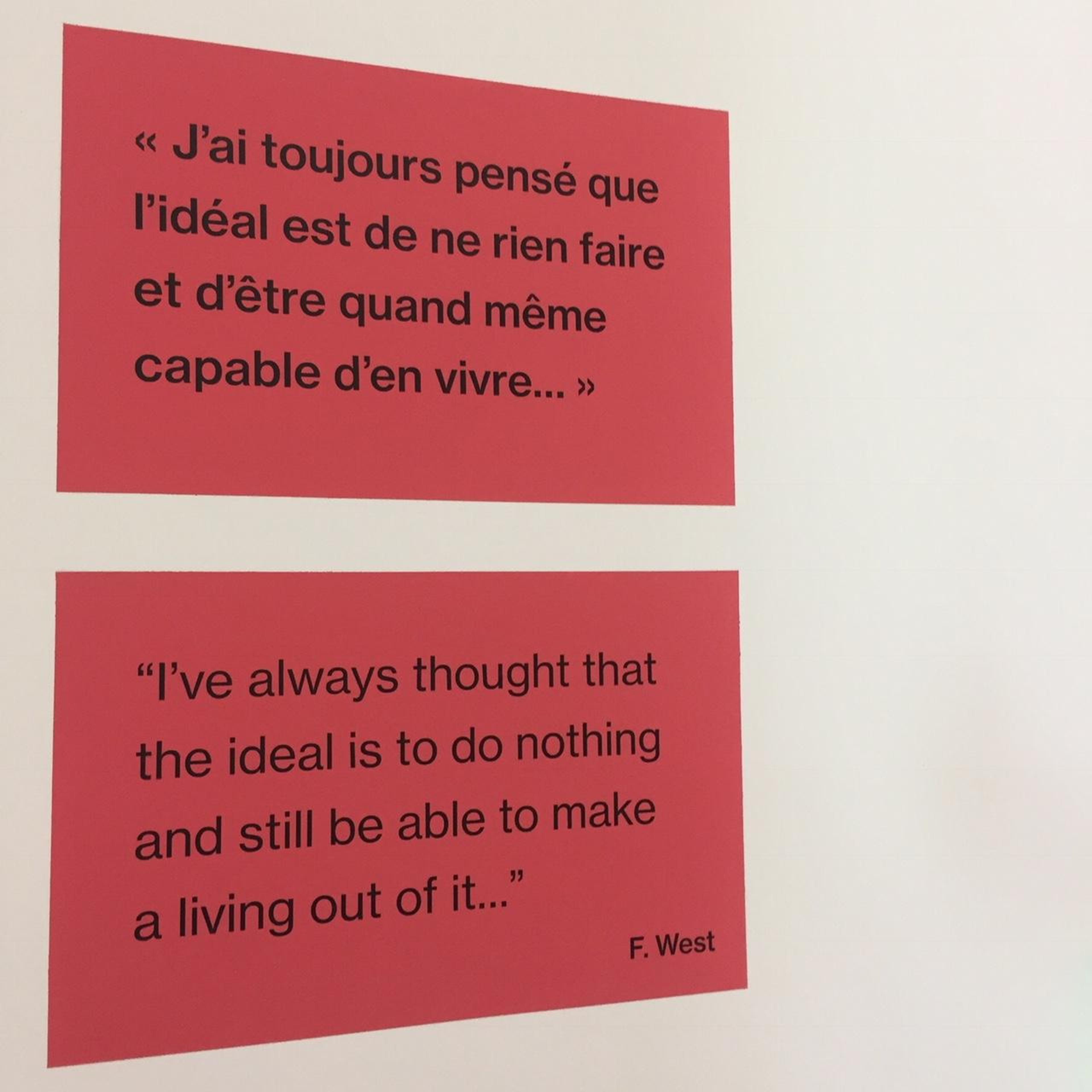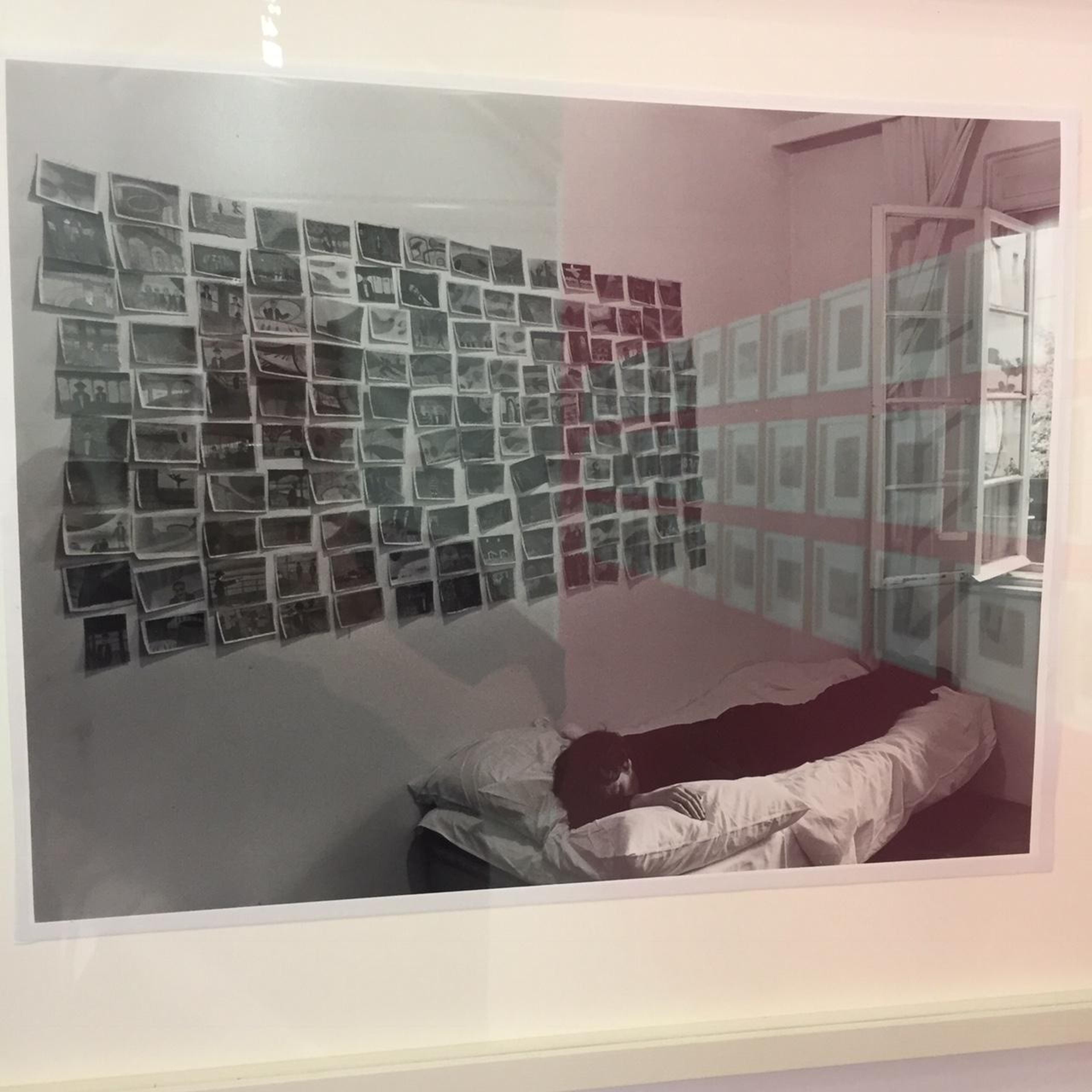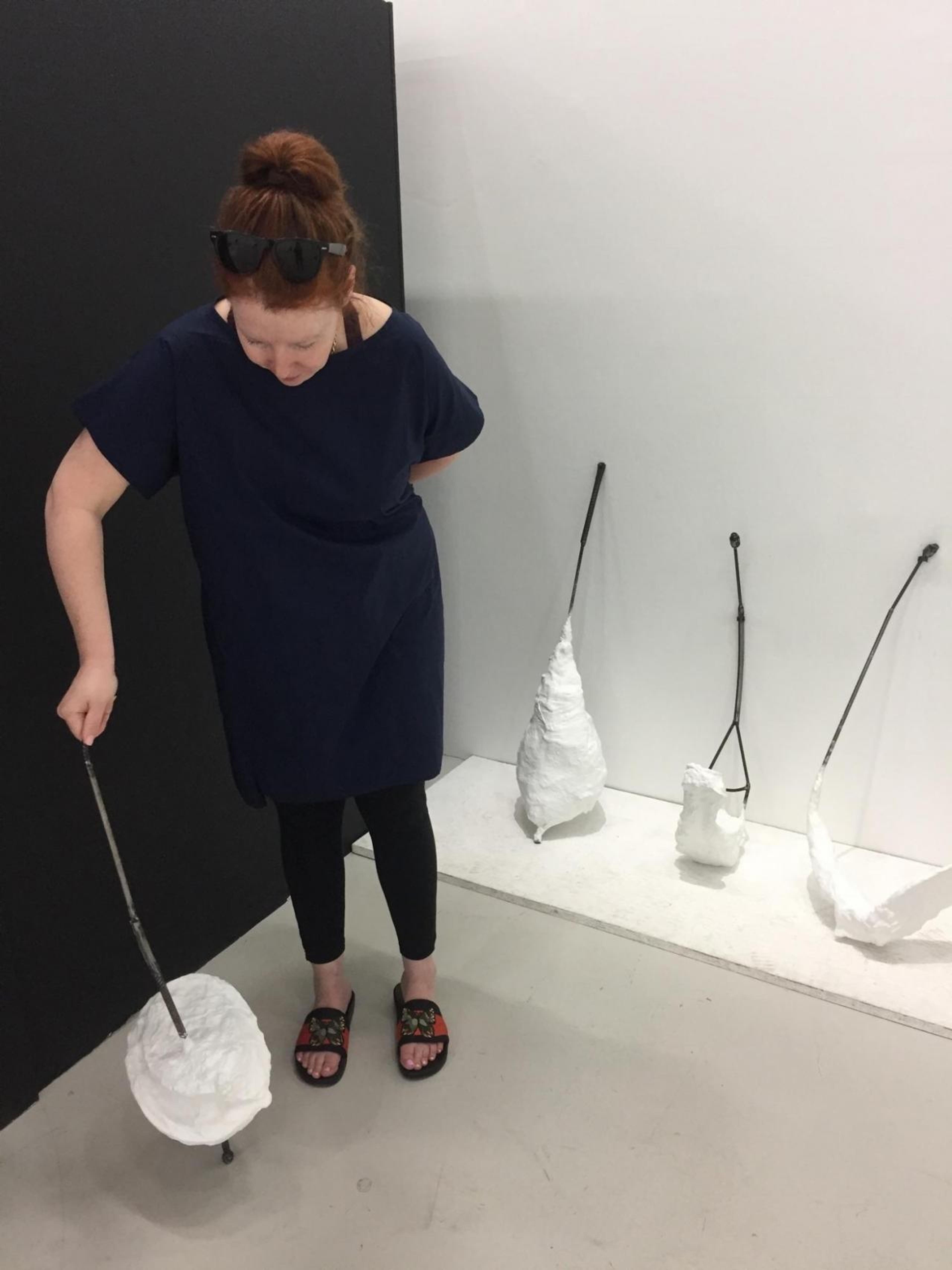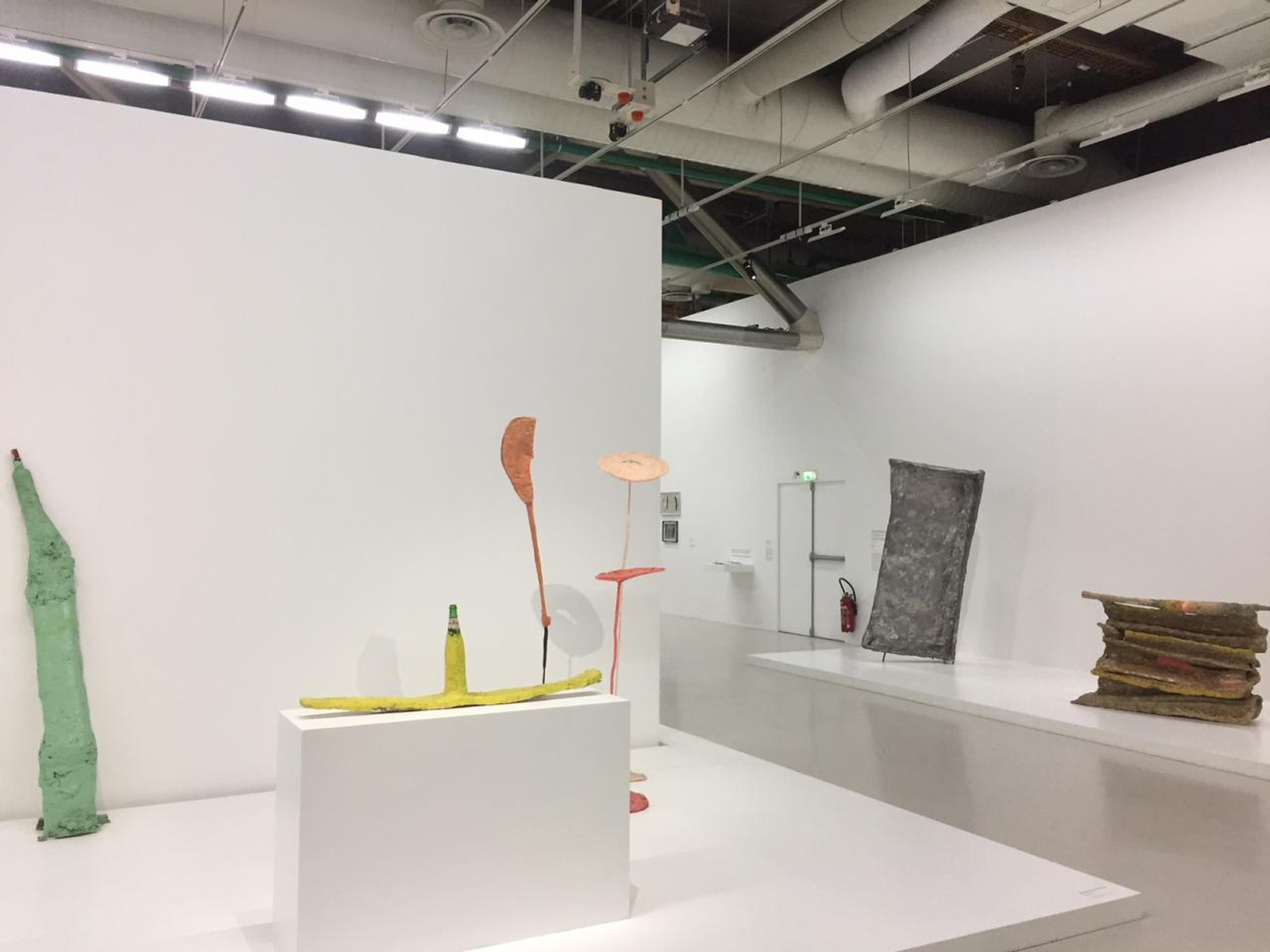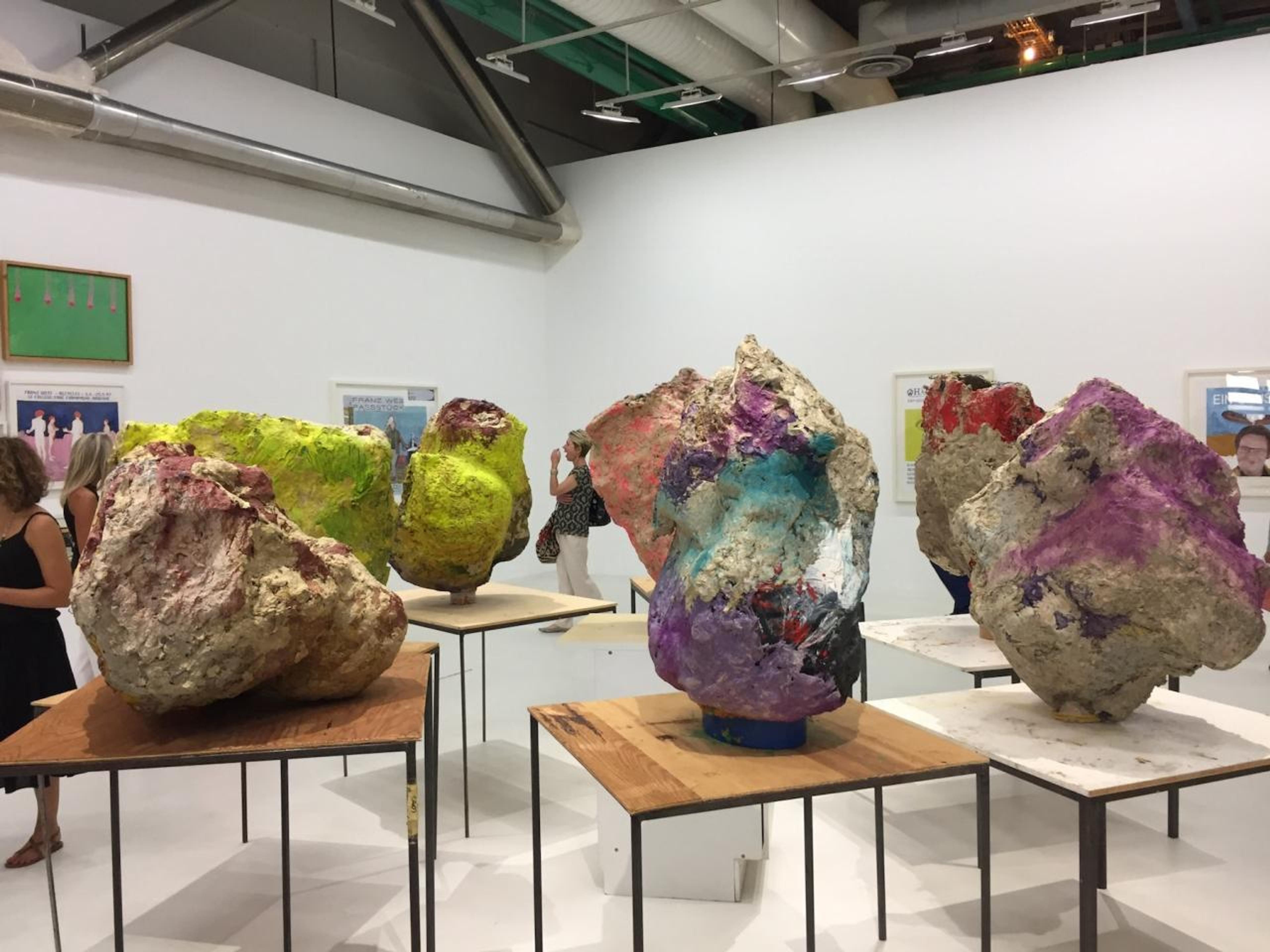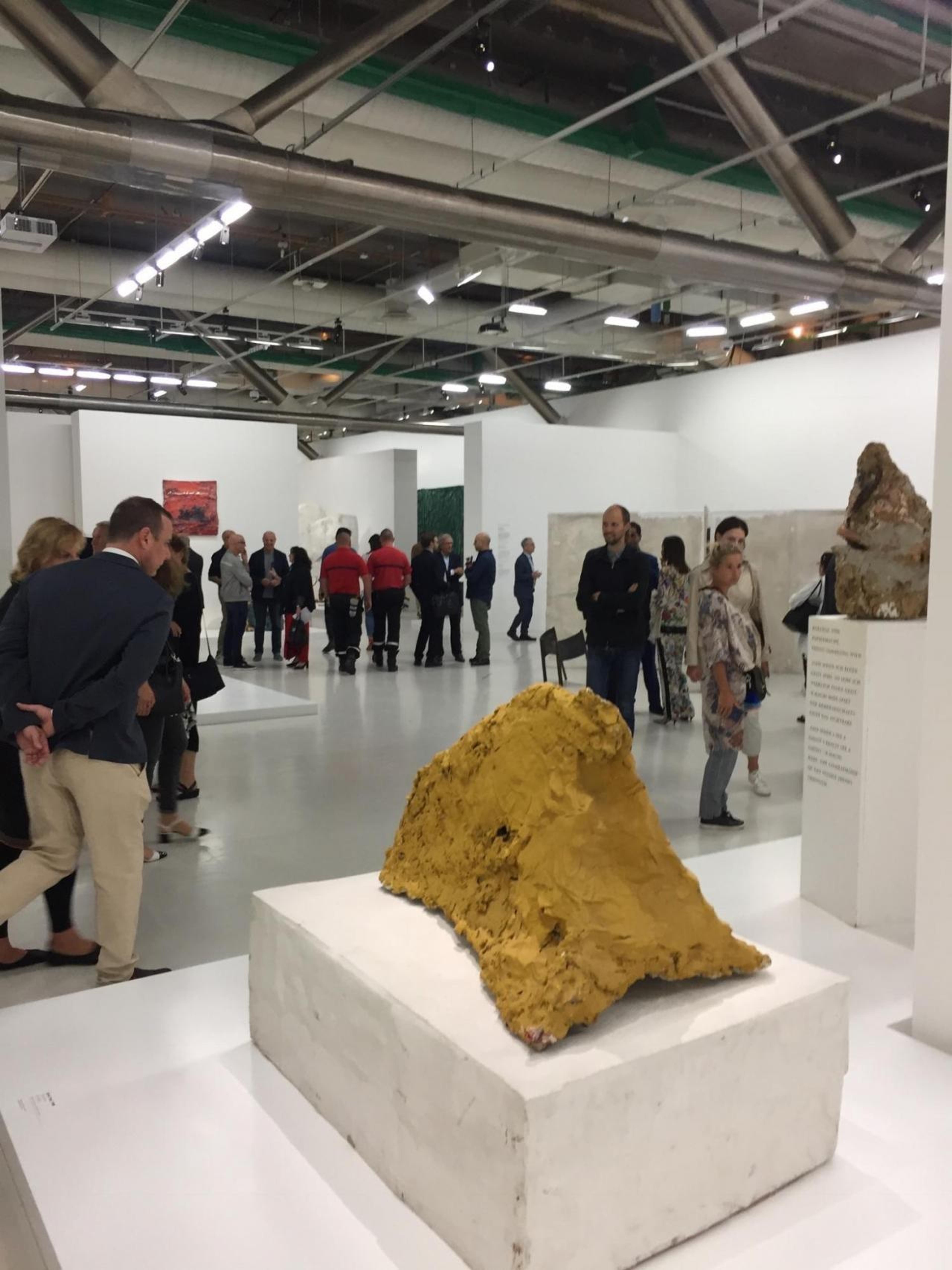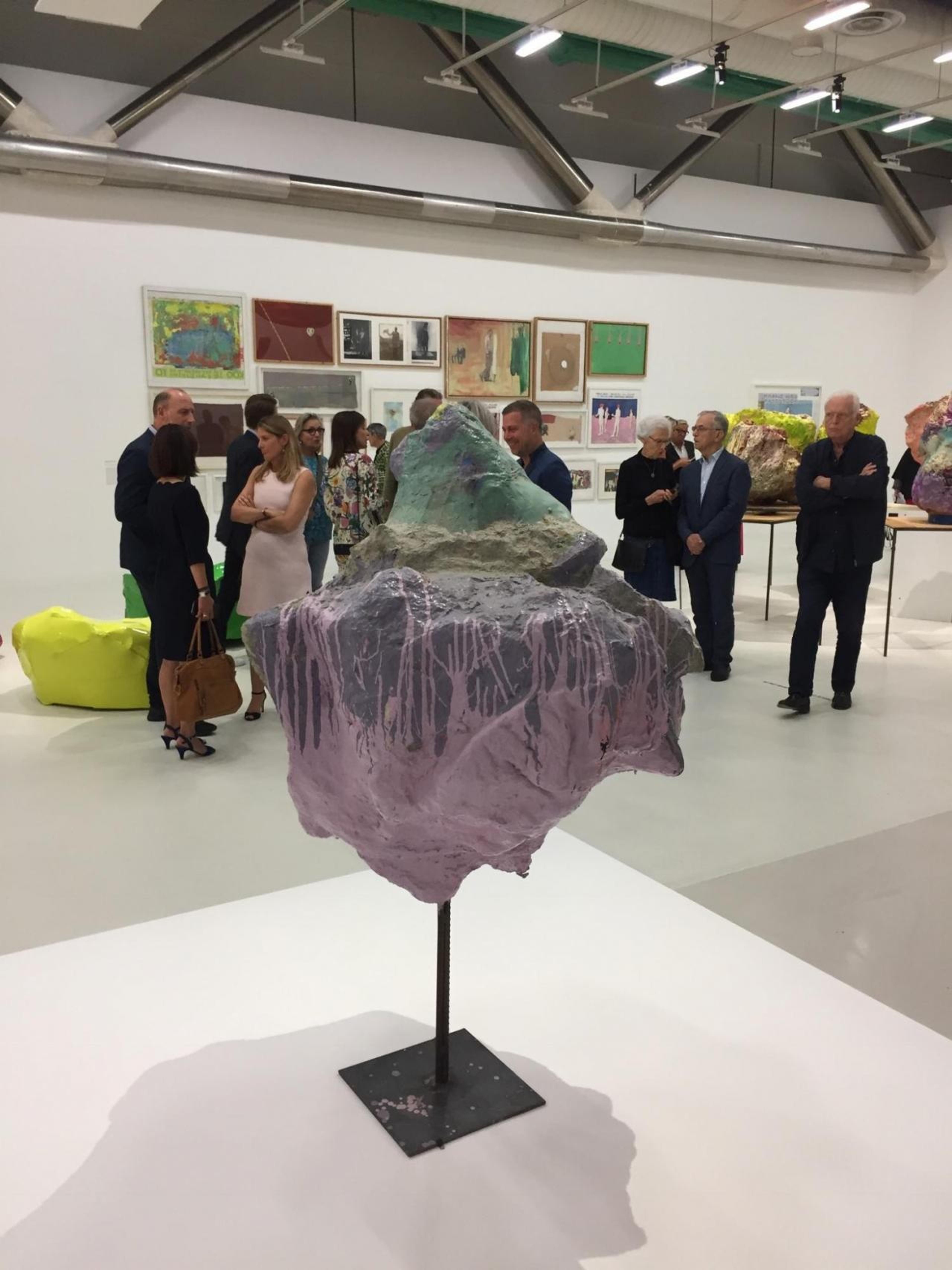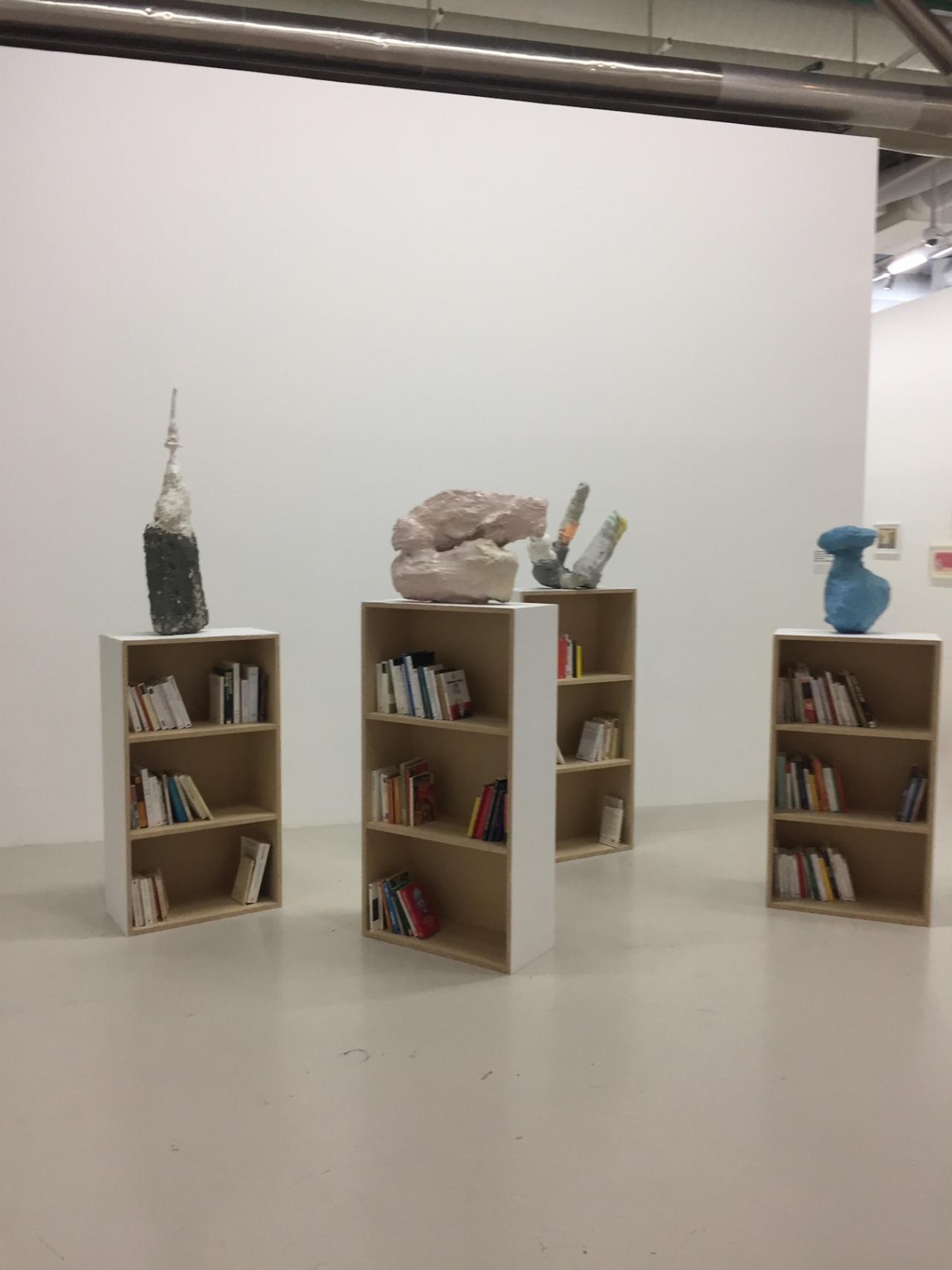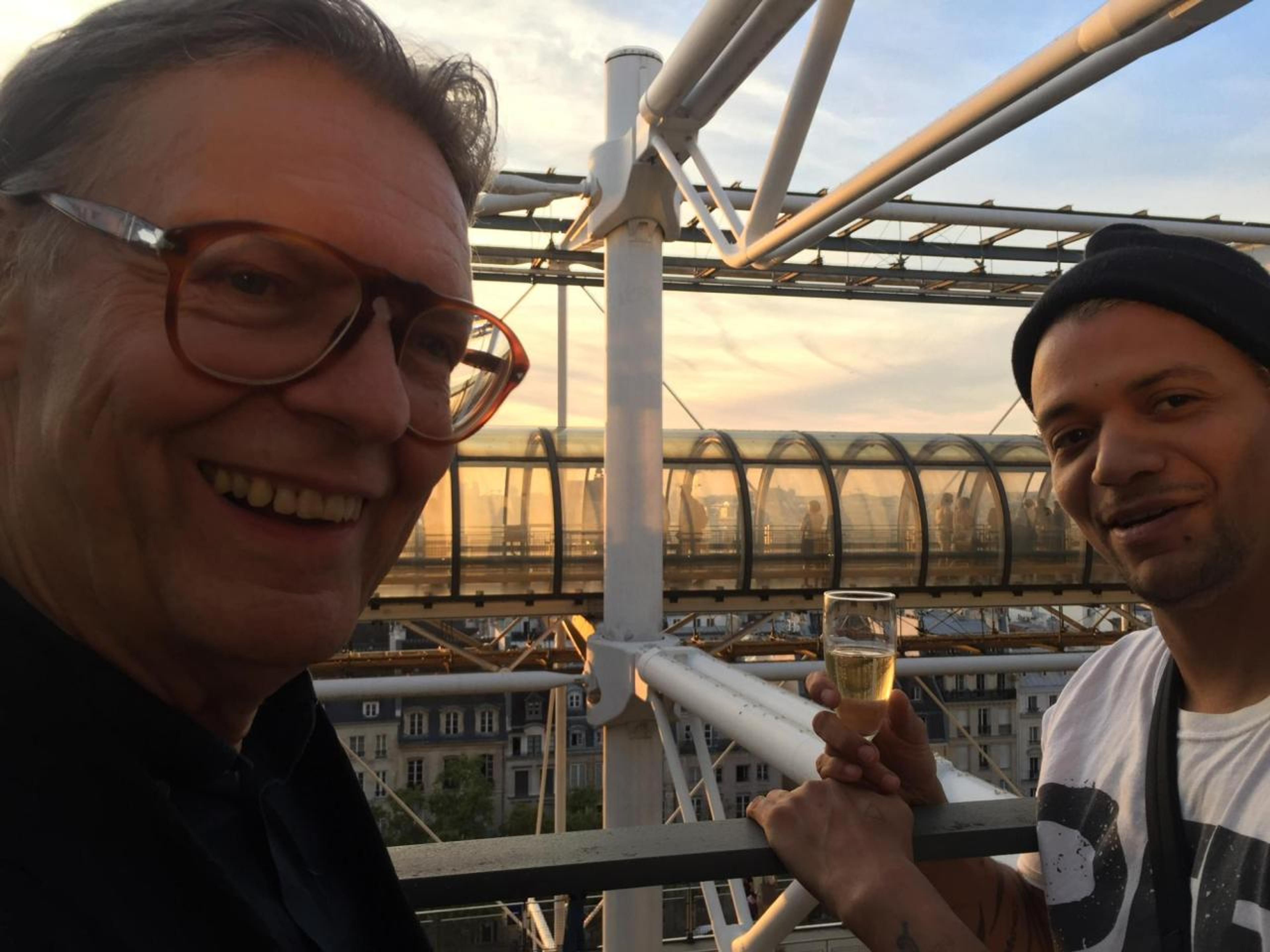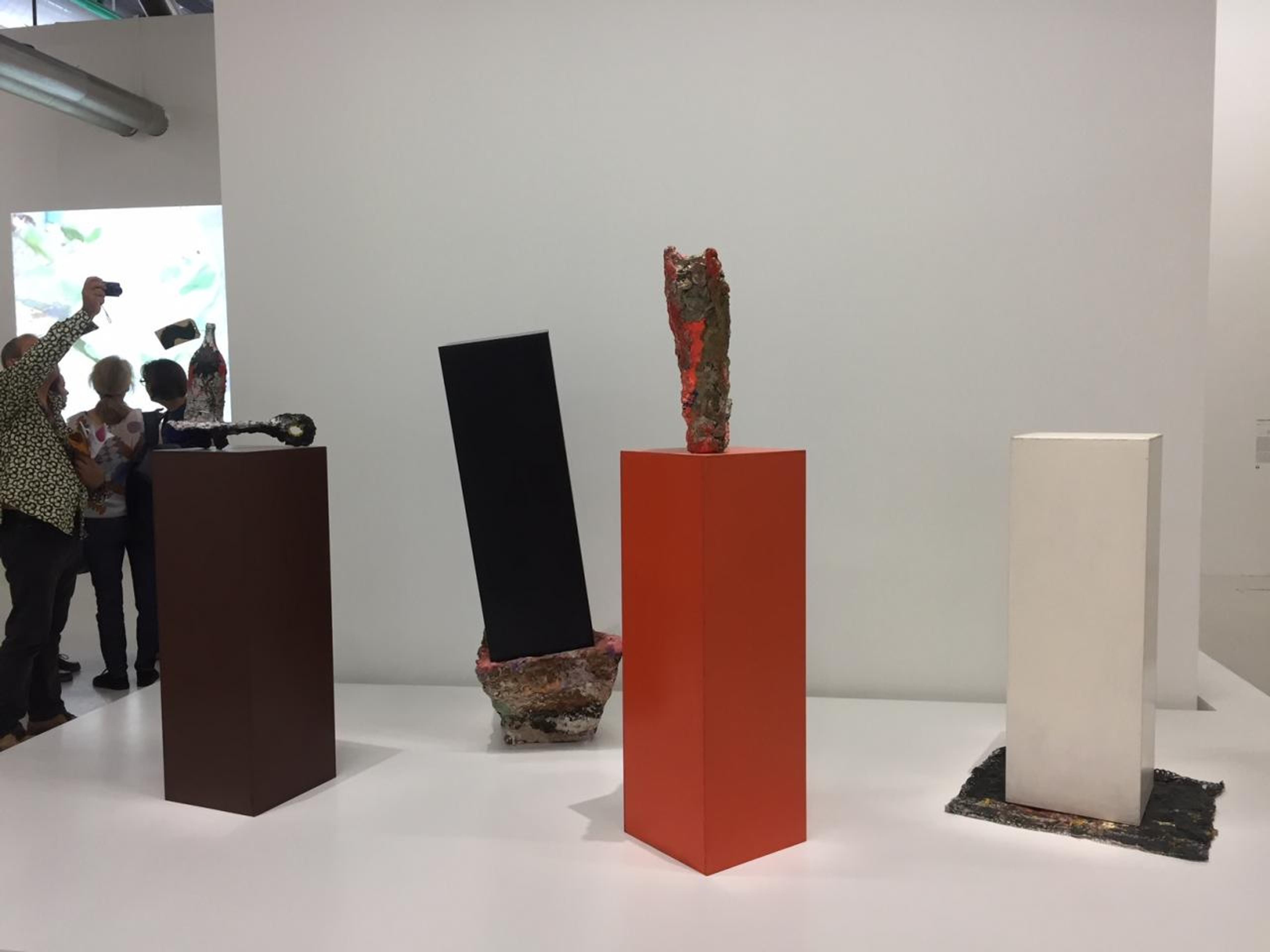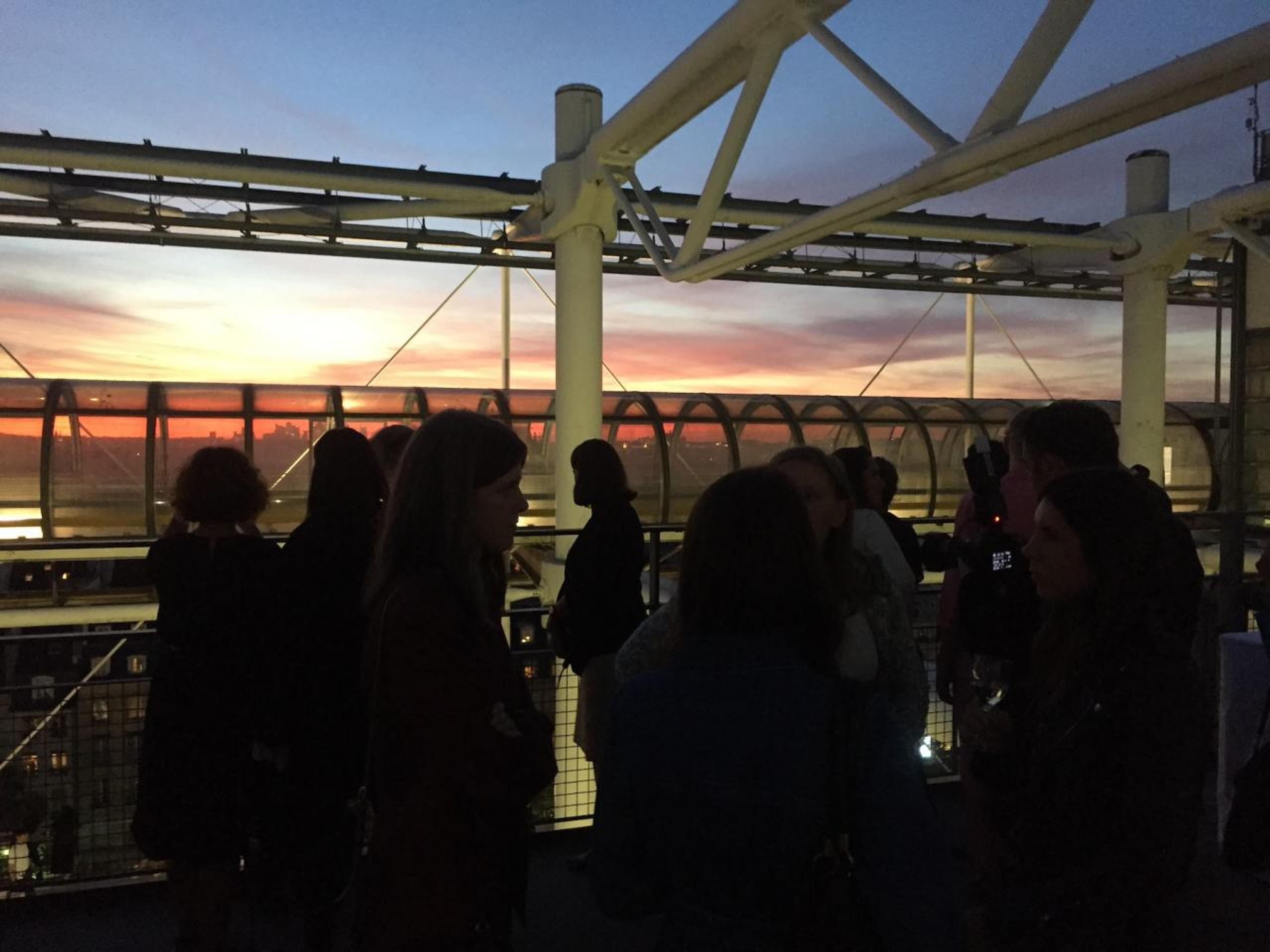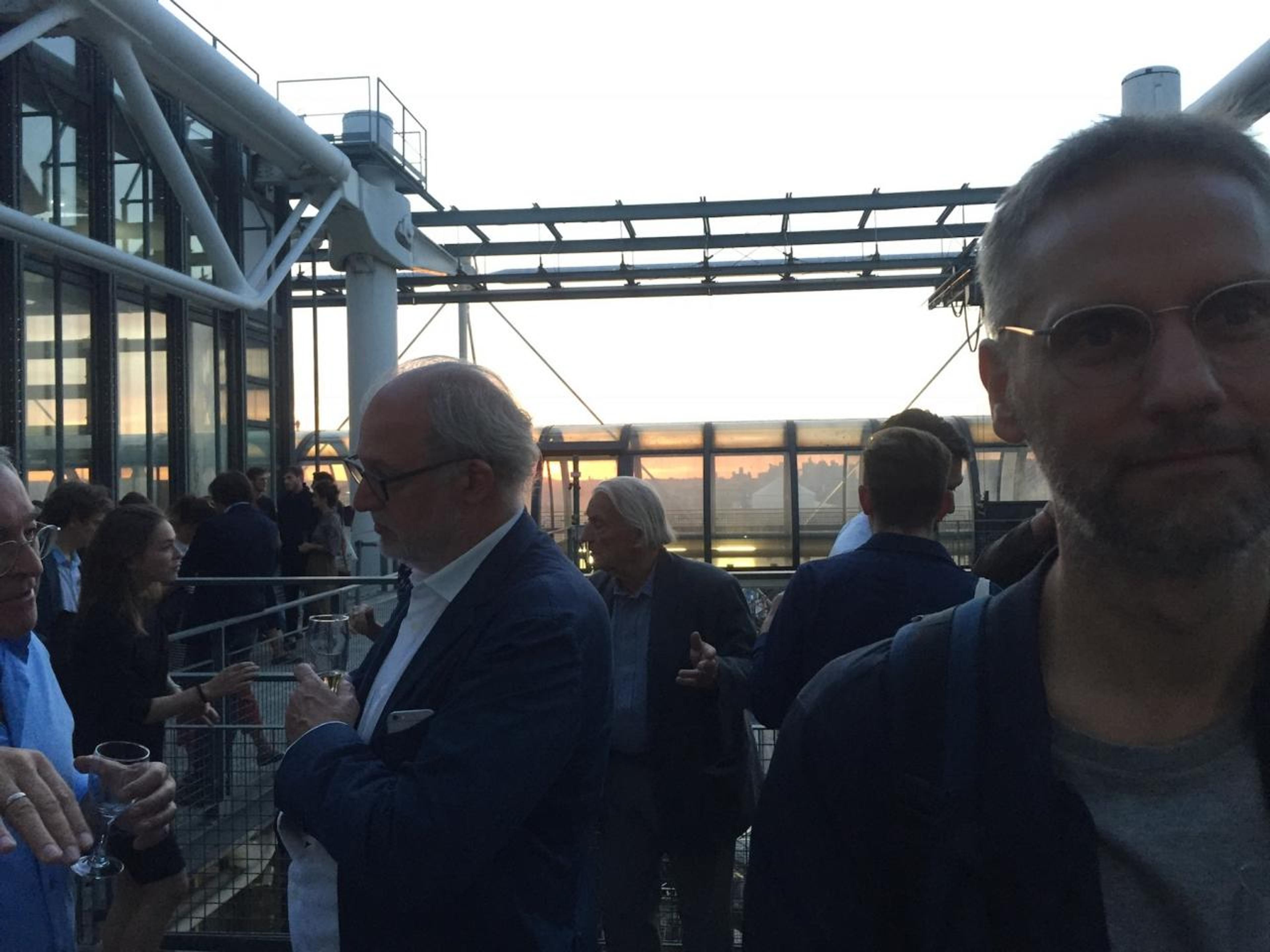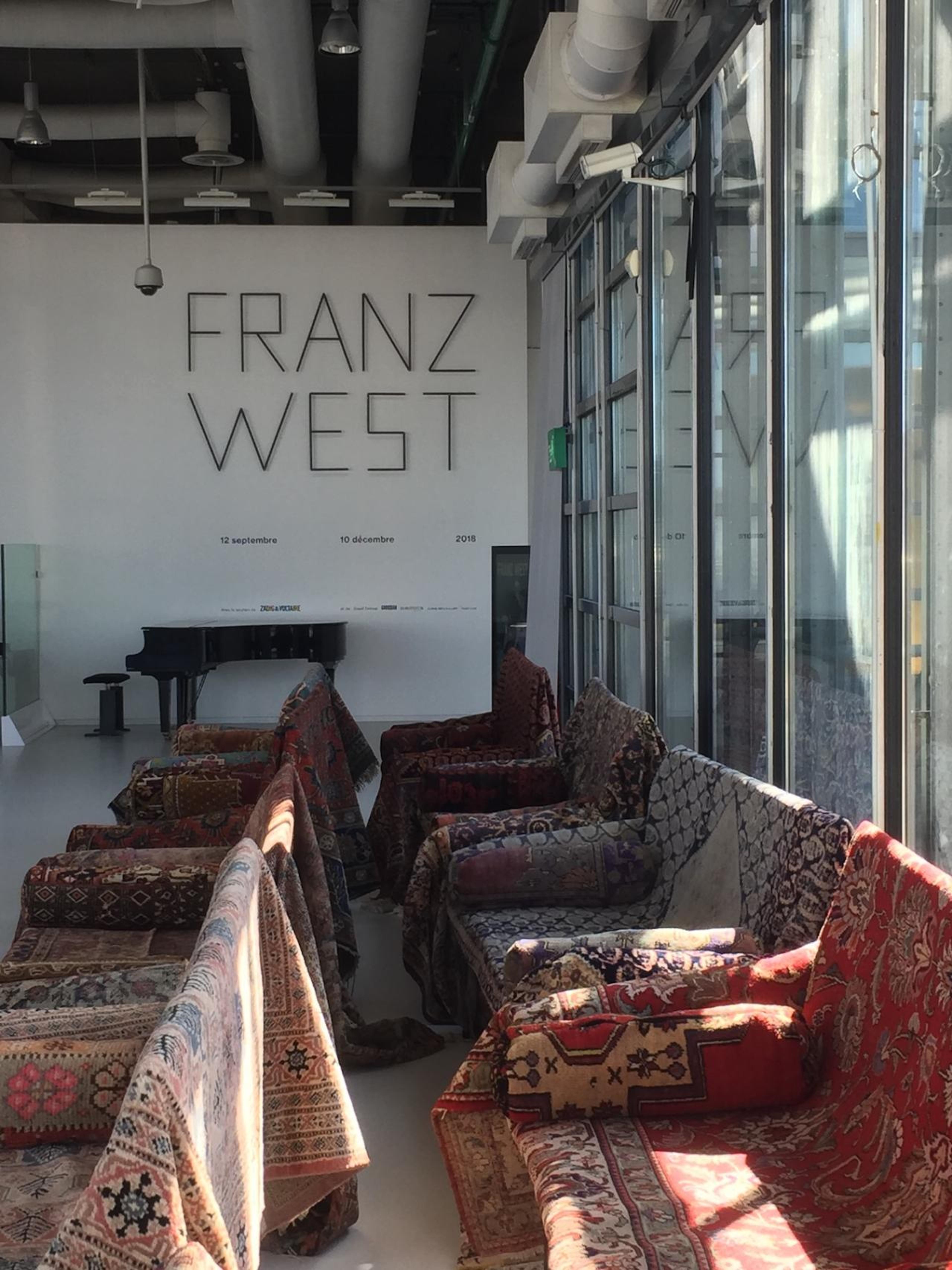This is a notional journal of sorts, but Wittgenstein demystified the notion of “observational self-knowledge” so hopefully Franz West will forgive me. It’s a group of images mostly from the opening of “Franz West” at the Centre Georges Pompidou in Paris. And sometimes names are pointed out, or a brief description or elaboration or titles – just like one might do while looking through photos from the previous few days.
.
9 September, Day one
The “Life’s Good” sign hovering over housing buildings on the outskirts of Paris seems almost unironic in the beautiful French late summer sun, except for homeless refugees dwelling along the road embankment as one enters the City of Lights. I am here for the opening of the Franz West retrospective at the Pompidou and this fraught “Life’s Good” observational moment seems fitting for a man whose art engaged the dichotomies of ugly and beautiful, suffering and pleasure, sacred and profane.
.
.
Later in the afternoon there is a preview, but first I walk from the museum to the Bibliotheque Historique de la Ville de Paris (pictured), where some of West’s outdoor works are already on view. There are also outdoor works at the Musée Picasso Paris and Musée Cognacq-Jay. It is strange to see Franz’s works with partitions around them – set them free!
.
The Opening – 10 September, Day two
It is very warm outside and several art world women are spotted at the COS store buying cool dresses for the evening. Later, during the opening reception, the security is vigilant, but when finally entering the museum, one spots the first glimpse of the large and iconic pink sculpture, Rrose/Drama (2011).
Inside the atrium of the Pompidou: Franz West Rrose/Drama (2011)
.
Upstairs, on the sixth floor: As one enters the glass foyer, which is lined with couches covered in West’s carpets, musicians play. Freddie Jelinack , who looms large over this exhibition as one of West’s original collaborators, is there with horn in hand and accompanied by Philipp Quehenberger (another long-time collaborator) at the keyboard, Didi Kern on drums, and a cool bass clarinet player (whose name I unfortunately missed). Listening, the spirit of West comes alive. There could be no entry more fitting for the exhibition’s opening night.
.
One of West’s original collaborators, the musician Freddie Jelinek (left), on the roof of the Pompidou during a break from playing horn and rhythm.
.
Zurich and New York Gallerist Eva Presenhuber (centre left with camera) photographing the exhibition. Presenhuber and West had a long-lasting working relationship and great respect for each other.
Photo by Loic Le Gall, Assistant Curator at the Pompidou
Chief Curator Christine Macel of the Pompidou and Senior Curator Mark Godfrey of Tate Modern sitting on the couches covered in carpets, which were abandoned by their owners and then collected by West from Viennese drycleaners.
Godfrey said that most, but not all of the exhibition will travel to the Tate in February. New works will comprise 10% - 20% of the London iteration. Also, because of certain parametres at the Tate, works that can be sat on (interacted with) at the Pompidou will there be off-limits. Because of this they are working with artist and Franz collaborator, Sarah Lucas, to find creative solutions to creating partitions.
Opening crowd with Lemurenkopf (Lemur Head)
.
Herbert Brandl , Peter Pakesch , Heimo Zobernig , and Franz West at the Peter Pakesch Gallery in Vienna, 1987. Pakesch was actually at the opening but this early photo is posted as a wall decal in the exhibition. Throughout his life, in roles as a gallerist, curator, and museum director, Pakesch advocated for West’s work.
Lemurenköpfe (Lemur Heads)
.
Bernard Picasso (centre in suit) and Almine Rech (floral), of the eponymous gallery, amongst the opening crowd.
.
Gallerist David Zwirner , who organised West’s first solo show in New York City in 1993, and after a protracted legal battle continues to represent the estate today, with Vienna-based poet Benedikt Ledebur . Zwirner is listed as a supporter of the exhibition and Ledebur interviewed West for the book Extroversion: A Talk (2011).
.
Stefan Ratibor , the Director of Gagosian, London. When asked, Stefan thought this was an ideal place for an exhibition of West’s work and that the architecture, designed by Richard Rogers and Renzo Piano, with its exposed ceilings was a good match. Gagosian is also a sponsor of the exhibition and represented West during most of the 2000s. I saw Ealan Wingate, Director of Gagosian New York, from the corner of my eye but then lost him in the crowd.
.
Mario Peroni of Radio Arte Mobile (Rome), Bernnard Riff , and Dira Peroni , Mario’s wife. Riff made over thirty films in collaboration with West. One of the two included in the Pompidou show, Capri/Capra (1993), captures West painting on a terrace at Casa Solitaria, the home of collectors Giuliana and Tommaso Setari.
From left to right: collaborations with: Herbert Brandl, Albert Oehlen, and Herbert Brandl, titled Ohne Titel (1987), Flatus vocis (1991), Frucht ( Fruit, 1987), respectively.
.
Austrian artist Andreas Reiter-Raabe , who also runs Gesso Gallery, was on hand and his video included in the exhibition is a long-format, mostly silent piece that follows West through his day-to-day studio routine. It is an interesting fly-on-the-wall perspective (and as close as most will get) to seeing West in his Viennese studio.
.
The New York collector and gallerist Adam Lindemann commented on Instagram that after seeing the exhibition he thought it could be “twice the size easily and better lit”. (He also enthusiastically noted that Franz West was a “great great” artist!)
West is estimated to have created six-thousand pieces of work and the Pompidou is displaying almost two-hundred of these. In comparison, Picasso produced around fifty-thousand works, with roughly only 3,300 of those being paintings and sculpture; the bulk comprised prints, drawings, and ceramics. If a West show included ten percent of his oeuvre that would be six-hundred pieces – almost two-hundred is not enough! With age, West preached “all things in moderation”, but I think the more the better when it comes to his work.
.
West would refer to himself as “lazy”. He described waking up in the middle of the night to eat a few slices of meat from the refrigerator, just to get enough energy so he could fall back asleep again. A prolific artist full of contradictions but never complacency.
.
.
Franz on the Bed (Franz auf dem Bett) (1973) is a photo by Friedl Kubelkathat showsWest napping below his first artworks (graphite drawings), called Mutter Kunst . West made these to please his mother who wanted him to do something productive with his life. Made between 1970 and 1973, it is remarkable how many are here and in such great condition.
.
The Austrian linguist and writer Martin Prinzhorn contributed to the catalogue with an essay and early interview with West. West was always curious about what Prinzhorn would bring to the table.
.
Innsbruck-based gallerists Elisabeth and Klaus Thoman , at right. Elisabeth took the photo of West that is on the poster and catalogue for the exhibition.
A visitor interacting with Passstücke mit Box und Video (Passstücke with Box and Video , 1996).
Some pieces have been recreated for this exhibition so that the general audience can interact with the works as the artist intended. Passstücke is an invented word that is commonly translated to “Adaptives”. These performative works are an extension to the body, and in turn the body is the sculpture.
.
The building itself serves as a perfect foil to the broad array of stripped down and material relationships in West’s work. The layers of exposed practical construction parallel both the Pompidou building and, for instance, what West referred to as his “legitimate” sculptures.
Franz West Gruppe mit Kabinett (Group with Cabinet, 2001),papier-mâché, gauze, tables, set of eight sculptures, dimensions variable
.
Franz West Ohne Titel (2011)
.
2 to 2 (do too 2 [too do 2 {to do two}]) (1994) combines West’s passion for reading with the practical aspects of a pedestal being an accessible container to the public while presenting sculpture. He also selected the books and they are available for visitors to browse.
.
West’s Viennese gallerist Christian Meyer , of Galerie Meyer Kainer, with Los Angeles–based artist Christian Rosa.
Franz West, Heimo Zobernig, Herbert Brandl, and Otto Zitko Ohne Titel, 1988
.
Following the opening, I was invited to “cocktails and dinner”. It seemed simple enough, but in the society surrounding Franz West nothing is so straightforward and the dinner had satellite dinners. The full celebration – and interesting people watching – took place on the terrace of the Pompidou the entire night.
.
Jens Preus (right) frequently photographed West. Several of his photographs and other works are included in the exhibition.
.
11 September, Day three
The day after the private opening, Chief Curator Christine Macel gives a tour of the exhibition to the press at 10am. There was an earlier 8:30am walk and talk, which I missed.
Patricia Pallfy from Dorotheum was at the gallery entrance and it will be nice to probably run into her again in London. It’s like following a band: West certainly had groupies when he was alive, and now his followers are growing. (Also, his followers of followers.) With this wonderful, expansive retrospective, very much in the spirit of the man, the numbers and influence will not only increase but explode.
During the opening night on the top floor of the Pompidou, the musicians were playing and so many familiar faces faced each other as well as flickering videos of a twenty-two-year-old Franz Zokan, who would soon revert to his mother’s maiden name and become the artist known as Franz West. With all of these works placed gloriously together, with Passstückebeing handled and furniture being lounged on, it brought to the mind the story of the jazz musician Charlie Parker. Almost immediately after Parker, who was known as “Bird”, died, graffiti by his legions of fans and friends appeared around his haunts in New York City’s East Village. Everywhere it read “BIRD LIVES!” – a radical hopeful mark of defiance and respect by the people who felt connected to him and his music in the days following his death. Now it’s time to write “FRANZ LIVES!”
"Franz West"
Centre Pompidou
12 September – 10 December 2018
JULIE RYAN is an artist living in New York and previously lived for many years in Vienna, Austria. Ryan curates and writes on art and is a contributor to the exhibition catalogue, FRANZ WEST, at the Centre Georges Pompidou. Ryan was a friend and collaborator of Franz West.



